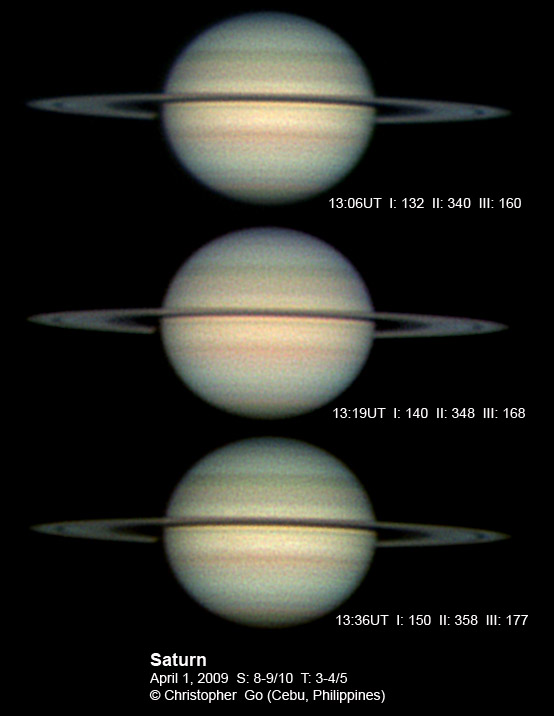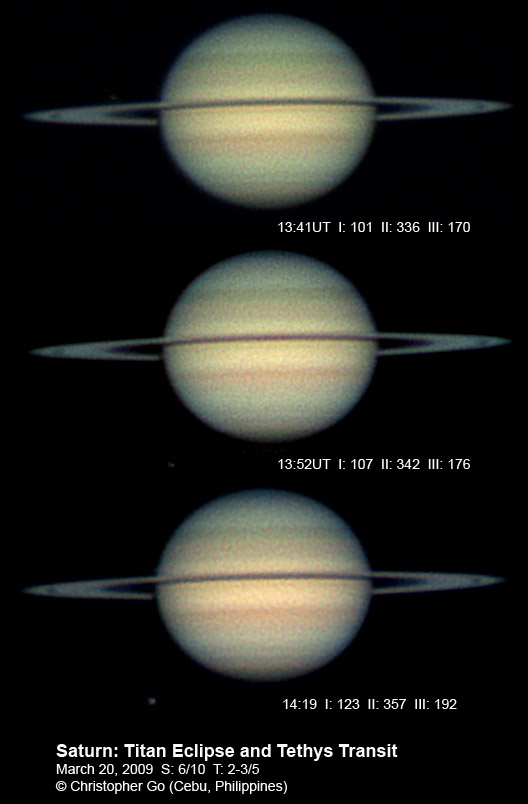|
January 7, 2009 It had been cloudy for
the past weeks. Condition today wasn't great because transparency
was poor. I was able to have a break late in the session
before clouds and haze started to roll in again.
I was finally able to capture the Titan Transit.
This type of transit is so rare that the last time this happened was in
1995. After March 12, will be last that can be seen this season.
Next year there will be 4 transits from mid-April to July 4. After
that, the next transit will be on 2025.
The last 4 transits of this season will be on
1/23, 2/8, 2/24 and 3/12. The 2/24 and 3/12 transit is the rarest
as it will feature both Titan and it's shadow!! In fact the
3/12 transit will be a grazing transit where half of Titan in
graze Saturn's north pole. All the
Titan transit this season will only be seen in the Asia/Pacific region!
After 3/12, the transit will return on July 16 but by then, Saturn will
be close to the sun.
The color image is a LRGB image of Saturn and
Titan. The monochrome animation was taken using luminance.
The northern hemisphere is darker than the southern hemisphere.
The STD is no longer visible so it must have dissipated. There is
a hint of the Cassini Division at the edge of the ring.
|


















































